Set forth below is the thirteenth “Texas Shout” column. It first appeared in the Holiday Edition 1990 issue of the West Coast Rag, (Now Syncopated Times.)
Chicago-style Dixielanders have never been reluctant to play “standards.” Indeed, as will be explained below, it is the Chicagoans who created the body of evergreens that players of vintage jazz have come to regard as standards.
New Orleans-style jazzmen (including uptown, downtown and the variation known as “British trad”) have always understood that a leader’s choice of tunes to play is less important than what his band does with those tunes. Moreover, Crescent City musicians, from Louis Armstrong, Bunk Johnson and George Lewis down to the present day, have always had a strong streak of showmanship in their presentations, of ensuring that their audiences go away entertained.
Thus, while the New Orleans-originated groups have their favorite selections, most have never shown any particular aversion to the standard repertoire. Indeed, The Preservation Hall Jazz Band at one time made a point, and may still do so, of ending each concert with “Just A Closer Walk With Thee” followed by “When The Saints Go Marching In.”
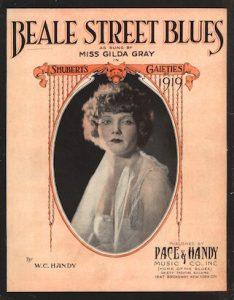 There is, however, one branch of Dixieland jazz that makes a conscious effort to cut itself off from a body of music that includes many of the best vehicles ever written in the idiom. It is the West Coast revival style. Combos of that stripe, including (for purposes of today’s column) those hot dance combos that follow a West Coast lead, probably make up a majority of the Dixieland bands currently heard on the festival and jazz club circuit.
There is, however, one branch of Dixieland jazz that makes a conscious effort to cut itself off from a body of music that includes many of the best vehicles ever written in the idiom. It is the West Coast revival style. Combos of that stripe, including (for purposes of today’s column) those hot dance combos that follow a West Coast lead, probably make up a majority of the Dixieland bands currently heard on the festival and jazz club circuit.
In my view, failure by these bands to play selections from the standard repertoire does a disservice both to our music and to the audiences for such combos. Moreover, I believe that it results from a basic misreading of the musical objectives of the original West Coast revivalists. Perhaps a little discussion of the background of the revival can put the picture in perspective.
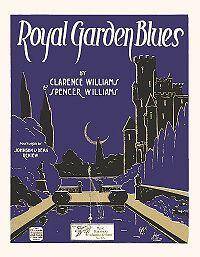 When trumpeter Lu Watters and his Yerba Buena Jazz Band inaugurated the West Coast revival in 1941, swing was the prevailing jazz style. To the extent that Dixieland was heard at all, it was invariably Chicago style.
When trumpeter Lu Watters and his Yerba Buena Jazz Band inaugurated the West Coast revival in 1941, swing was the prevailing jazz style. To the extent that Dixieland was heard at all, it was invariably Chicago style.
As I have mentioned in previous writings, Chicago is a solo-oriented style. The individual solos are the focus of a Chicago performance.
Repertoire is not particularly important in Chicago style. Chicagoans and their fans do not consider it repetitive if, for example, “Squeeze Me” is played at every performance because their main interest is in the solos, which will be different each time.
For that reason, Chicago jazzmen can and do function quite well with a book limited to fifty or so tunes that have proven themselves to be comfortable vehicles for improvisation. In 1940, when Watters was developing his musical ideas, such a group of tunes, which I will refer to in this column as the “1940 Standards,” was the basis for just about all the Dixieland jazz being performed.
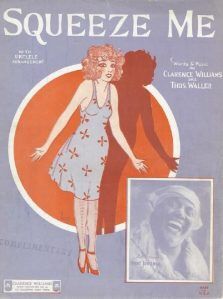 Watters was interested in restoring to the scene some of the breadth that Dixieland jazz had achieved during the twenties. He was attempting to balance the scales by giving exposure to Dixieland that was ensemble-oriented instead of solo-oriented, that used two-beat rhythm instead of the typical Chicago four-beat, that used a banjo and tuba in place of the usual Chicago guitar and string bass, and that gave some stage time to worthwhile tunes which were not commonly being rendered.
Watters was interested in restoring to the scene some of the breadth that Dixieland jazz had achieved during the twenties. He was attempting to balance the scales by giving exposure to Dixieland that was ensemble-oriented instead of solo-oriented, that used two-beat rhythm instead of the typical Chicago four-beat, that used a banjo and tuba in place of the usual Chicago guitar and string bass, and that gave some stage time to worthwhile tunes which were not commonly being rendered.
Watters, as we know, achieved his purposes with an impact that forever changed the course of Dixieland jazz and inspired disciples throughout the world. In doing so, he always remembered to maintain, in his own performances, the type of balance that was lacking in the Dixieland scene when he came to it.
Specifically, Watters did not turn his back on the 1940 Standards. Indeed, in the YBJB’s first recording session, two of the eight tunes waxed were 1940 Standards, “Muskrat Ramble” and “Memphis Blues.” Throughout his career, he continued to record the 1940 Standards, his discography including, for example, “Fidgety Feet,” “St. Louis Blues,” “Royal Garden Blues,” “When The Saints Go Marching In” and “Tin Roof Blues.”
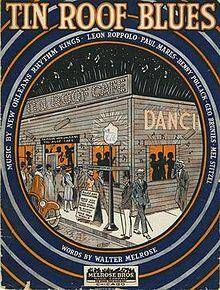 Watters, of course, understood what Dixieland jazz is all about. He knew that a band should play the best tunes it can find, but should be sure to do so with originality, with a fresh vision of the material. No matter how many times you have heard a given Dixieland tune, when you finally hear the Yerba Buena version, you’ll encounter a rendition with its own distinctive stamp; with a unique, instantly recognizable sound; and with a chart that shows you facets of the selection you’ve never previously seen.
Watters, of course, understood what Dixieland jazz is all about. He knew that a band should play the best tunes it can find, but should be sure to do so with originality, with a fresh vision of the material. No matter how many times you have heard a given Dixieland tune, when you finally hear the Yerba Buena version, you’ll encounter a rendition with its own distinctive stamp; with a unique, instantly recognizable sound; and with a chart that shows you facets of the selection you’ve never previously seen.
Watters’ most famous alumnus, Turk Murphy, splendidly carried forward the Watters banner. Turk’s recordings not only cover many of the numbers revived by Watters on disc, but also such 1940 Standards as “Bill Bailey, Won’t You Please Come Home?”, “Ballin’ The Jack,” “Wolverine Blues,” “After You’ve Gone,” “The Darktown Strutters’ Ball” and “Baby, Won’t You Please Come Home?”.
Both of these great jazzmen are recognized as archetypes of musical integrity whose product made no concessions whatever to commerciality. Nevertheless, they continued to include 1940 Standards in their repertoires. Clearly, they wanted to play the best titles, and did so without regard to others who may have played, or were playing, the same tunes.
It is now a half-century later, and the scales badly need balancing in the other direction. First of all, many organized bands whose roots go back to Watters have distorted the revival’s interest in expanding the repertoire into an emphasis on avoiding the 1940 Standards at all costs. Second, though to a lesser degree, these same bands have lost the idea of finding an original and fresh way to present their music. Instead, we have many bands re-creating figures from recordings by Morton, Armstrong, Beiderbecke, Watters and other favorite artists in the belief that doing so constitutes the “correct” or “legitimate” method of Dixieland performance.
To illustrate, two of the most frequently-played tunes on the circuit today are “Rhythm King” and “Since My Best Gal Turned Me Down,” both excellent compositions. However, most bands have selected, from among a number of vintage-period recordings of those pieces, Bix Beiderbecke’s as the ones to be frozen in interpretation.
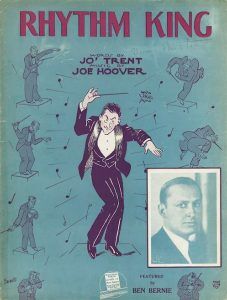 Today’s combos almost always open and close “Rhythm King” with the note-for-note front-line-only intro and tag from Bix’s 78. Similarly, “Since My Best Gal Turned Me Down,” a hard-charging set-closer if there ever was one, is constantly having its momentum cut off at the knees by regurgitation of the awkward and ill-considered stop-and-go ensemble from Bix’s penultimate chorus.
Today’s combos almost always open and close “Rhythm King” with the note-for-note front-line-only intro and tag from Bix’s 78. Similarly, “Since My Best Gal Turned Me Down,” a hard-charging set-closer if there ever was one, is constantly having its momentum cut off at the knees by regurgitation of the awkward and ill-considered stop-and-go ensemble from Bix’s penultimate chorus.
In this process, West coast revival bands have created a new body of standards that are not only being played unimaginatively, but also excessively in proportion to other quality tunes that have now fallen into relative neglect. Is “New Orleans Stomp” so superior to “Original Dixieland One-Step” that “New Orleans Stomp” needs to be performed by just about every organized band at every festival while “Original Dixieland One-Step” has virtually disappeared? Why is it justifiable to play “Canal Street Blues” over and over while 1940 Standards based on similar twelve-bar blues chord patterns, such as “Tin Roof Blues” and “Royal Garden Blues,” are deliberately ignored?
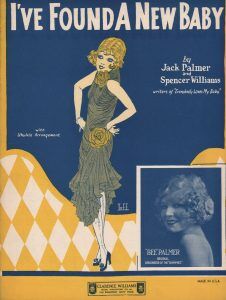 Revivalist bands that boast of ignoring standards will often tell you that the standards (always meaning the 1940 Standards) are overplayed, or that they are “easy” and unchallenging. In case you ever hear such claims, take it from me, both are nonsense in today’s scene.
Revivalist bands that boast of ignoring standards will often tell you that the standards (always meaning the 1940 Standards) are overplayed, or that they are “easy” and unchallenging. In case you ever hear such claims, take it from me, both are nonsense in today’s scene.
The “overplayed” accusation, one that was certainly accurate fifty years ago, simply isn’t true now. If you don’t believe me, check it out for yourself the next time you attend a festival that concentrates on organized bands or when you’re digging a West Coast-style outfit at your local jazz club.
During the event, count the renditions of “At The Jazz Band Ball,” “Jazz Me Blues,” “Beale Street Blues,” “I’ve Found A New Baby” and “Sugar” vs. those of “Buddy’s Habit,” “Flat Foot,” “Black Bottom Stomp,” “Once In A While” and “Big Bear Stomp.” After you’ve done so, ask yourself which group of tunes is overplayed.
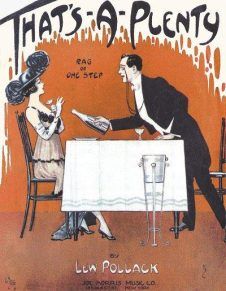 As to the “easy” argument, let’s begin by recognizing that some 1940 Standards are based on straightforward chord patterns and simple melodic phrases, just as are “Trouble In Mind,” “See, See, Rider” and lots of other tunes played by the combos that claim to specialize in esoterica. However, many of the 1940 Standards, such as “Clarinet Marmalade,” “Tiger Rag,” “That’s A’Plenty,” “Royal Garden Blues” and “Eccentric,” are as intricate, or more so, than the bulk of the selections typically played by revivalists.
As to the “easy” argument, let’s begin by recognizing that some 1940 Standards are based on straightforward chord patterns and simple melodic phrases, just as are “Trouble In Mind,” “See, See, Rider” and lots of other tunes played by the combos that claim to specialize in esoterica. However, many of the 1940 Standards, such as “Clarinet Marmalade,” “Tiger Rag,” “That’s A’Plenty,” “Royal Garden Blues” and “Eccentric,” are as intricate, or more so, than the bulk of the selections typically played by revivalists.
The simple truth is that the 1940 Standards got to be standards because, whether complex or simple in construction, they proved themselves to be compositions that facilitate the performance of swinging Dixieland jazz. After all, nobody put a gun to the heads of the 1940 Chicagoans and forced them to play the 1940 Standards. Despite what revivalists say, these tunes were played so frequently in 1940 because they are, on the whole, above-average compositions.
In fact, many of them are the cream of the crop from their source artists or composers. “Singin’ The Blues” provided the platform for what is generally agreed to be the best solo that Bix ever recorded. “St. Louis Blues,” “Memphis Blues” and “Beale Street Blues” are the core selections supporting W.C. Handy’s well-deserved reputation as the Father Of The Blues. Fats Waller’s formidable position as a jazz composer is firmly grounded on, to list a few of his best pieces, “Ain’t Misbehavin’,” “Honeysuckle Rose,” “Squeeze Me” and “Blue, Turning Grey Over You.”
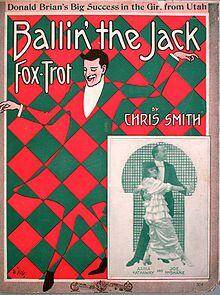 Are we doing our audiences and our sidemen a service by teaching them that such immortal works ought to be banished from our stages? What conclusions will they then draw about the elements that constitute good Dixieland jazz? Are these conclusions likely to enhance their abilities to appreciate the best our idiom has to offer?
Are we doing our audiences and our sidemen a service by teaching them that such immortal works ought to be banished from our stages? What conclusions will they then draw about the elements that constitute good Dixieland jazz? Are these conclusions likely to enhance their abilities to appreciate the best our idiom has to offer?
Along similar lines, combos also need to recognize that obscurity is not necessarily an indicator of quality — in fact, it may just as often suggest lack of quality. If you look through a pile of old sheet music, you will find that — along with about 99% of everything else that is a part of popular culture — just about all of it consists of ditties that never had any particular merit in the first place and have been forgotten for a good reason.
No one knows better than I that there are overlooked gems out there waiting to be discovered. However, no band has the rehearsal time to learn every tune ever written. Before deciding to add a selection to its repertoire, a band owes it to itself and to its audience to be sure that its time is going to be spent on the best possible material.
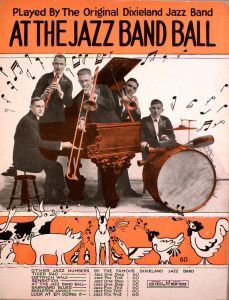 Thus, before scoring some ditty you’ve resurrected from a 78 or old music stack, look at it critically and do the same with the 1940 Standards. Has your band yet learned “I’ve Found A New Baby?” Is your discovery really a better, hotter selection than “I’ve Found A New Baby?” Think over your answer carefully before you decide which one to start rehearsing.
Thus, before scoring some ditty you’ve resurrected from a 78 or old music stack, look at it critically and do the same with the 1940 Standards. Has your band yet learned “I’ve Found A New Baby?” Is your discovery really a better, hotter selection than “I’ve Found A New Baby?” Think over your answer carefully before you decide which one to start rehearsing.
Note that I am not saying that we should discard the wonderful discoveries of the revival, nor that we should abandon the search for more. I’m merely saying that we need to balance the scales in the 1990s, as Watters did in the 1940s, by giving tried-and-true material a fair share of playing time.
Frankly, the 1940 Standards have so much to offer a creative jazzman that it’s a shame to deny yourself the delights of playing them. I know I don’t.
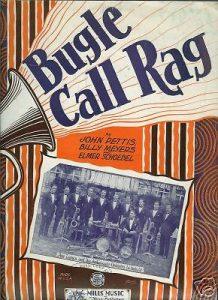 My Red Lion Jazz Band in Wilmington, basically a West Coast-style septet, has a book that I will match against anyone’s for little-known titles. However, we also regularly perform and thoroughly enjoy such works as “Sweet Lorraine,” “(Back Home In) Indiana,” “(Up A) Lazy River” and “Bugle Call Rag.” As far as we can see, our audiences respond positively to renditions of those numbers.
My Red Lion Jazz Band in Wilmington, basically a West Coast-style septet, has a book that I will match against anyone’s for little-known titles. However, we also regularly perform and thoroughly enjoy such works as “Sweet Lorraine,” “(Back Home In) Indiana,” “(Up A) Lazy River” and “Bugle Call Rag.” As far as we can see, our audiences respond positively to renditions of those numbers.
Similarly, if you have seen The Rent Party Revellers, you’ll know that we’re just as likely to play “That’s A’Plenty” as “Meat Cuttin’ Blues,” or “Clarinet Marmalade” as “Shake Your Shimmy.” If you have all of the Revellers’ recordings, you not only have performances of “Here Comes My Blackbird,” “Home Again Blues,” “Brancusi Bird,” “Forty And Tight” and “Kiss Me Sweet,” but you also have Rent Party versions of “I Got Rhythm,” “When The Saints Go Marching In,” “Royal Garden Blues,” “Sweet Georgia Brown” and “Jazz Me Blues.” Again, this blend in our repertoire seems to meet with the approval of crowds and record reviewers.
Revivalist bandleaders, why not do your part to rebalance the scales? Play “Barrel House Stomp” and “South African Blues” by all means and I’ll be there to cheer you on. However, in between those two, why not count off “Jazz Me Blues” and let us hear your own distinctive version of it?
I’ll pay attention to that one as well, and cheer it on if you try, as Watters did, to present it in a fresh costume. So, I hope, will the readers of today’s column. And I’ll bet you and your sidemen will have a lot of fun in the process.
Back to the Texas Shout Index.

The full run of “Texas Shout” has been collected into a lavishly illustrated trade paperback entitled Texas Shout: How Dixieland Jazz Works. This book is available @ $20.00 plus $2.95 shipping from Tex Wyndham, On request, Tex will autograph the book and add a personalized note (be sure to tell him to whom the note should be addressed).
Tex Wyndham’s 3 CD Guide to Dixieland with music and commentary is available for $20 plus $2.95 shipping. The separate CD, A History of Ragtime: Tex Wyndham Live At Santa Rosa, is available for $13.00 plus $2.00 shipping. On request, Tex will autograph the inner sleeve and add a personalized note (be sure to tell him to whom the note should be addressed).
Send payment to Tex Wyndham, P.O. Box 831, Mendenhall, PA 19357, Phone (610) 388-6330.
Note: All links, pictures, videos or graphics accompanying the Shouts were added at the discretion of the Syncopated Times editorial staff. They did not accompany the original columns and do not necessarily reflect the opinion of Tex Wyndham.
From roughly 1970-2010, Tex Wyndham was: (1) one of the best-known revivalist Dixieland jazz musicians in the US, as cornetist, pianist and bandleader, (2) one of the best-known ragtime pianists in the US, and (3) one of the most respected critics in the US of Dixieland jazz, ragtime, and related music. He is the only person about whom all three of those statements can be made.



















